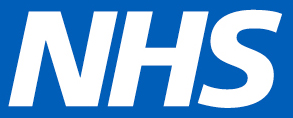Population health management is about supporting people to stay healthy for as long as possible and, when they do need care, making sure it's easy to access, well-coordinated and helps them return home as soon as possible.
While every person will have their own unique requirements and circumstances, when working at scale across a whole population, groups with similar needs and characteristics can be identified. By understanding these groups, care providers can plan and deliver services in the most appropriate way and in the most convenient locations for their population.
SCW supports population health management by:
- helping people stay well and take an active role in their own care
- helping care providers understand what their population needs are
- helping organisations share information securely.
Shared decision making
When people do become ill, evidence shows that involving them in decisions about their care has real benefits for the individual and for care providers. If they are well informed about all the medical and non-medical options available to them, people will often make different choices about their treatment. When care providers understand what really matters to an individual, they can support them to access the services or treatments they really need.
Getting this dialogue right can result in better health outcomes and better use of resources. So we work with the world’s leading authorities on shared decision-making to help care systems create an environment in which:
- every individual can take shared decisions at every point in their care journey;
- staff are trained and supported to use shared decision-making techniques;
- the necessary infrastructure, systems, and processes are in place.
Understanding what care people need
To continue providing high-quality services in a financially sustainable way, health and care systems must clearly understand patterns of demand, activity, and cost. For example, we can investigate questions such as:
- Why and how do people with similar needs access and use health and care resources?
- How does the cost of care vary between different population groups (or individuals within those groups)?
- How could services be improved and more closely aligned with people’s needs?
Our team of professional analysts answers these questions and gives system leaders insight into population needs, system performance, health outcomes, resource utilisation, and costs – and how they change over time. We use advanced segmentation and statistical analysis techniques to:
- pinpoint gaps, unwarranted variations in care, inefficiency and waste
- identify and prioritise areas for improvement
- identify groups of patients who may benefit from targeted interventions and support
- benchmark and assess alternative care pathways and new models of care
- evaluate the impact of change
To provide you with this depth of information we analyse whole populations, using data from primary care, secondary care, community care, mental health, and other data sets, such as social care and local shared care records.
Helping people share information securely
Population health management relies on having integrated health and care records that all care delivery partners can access securely, allowing them to improve care coordination, enhance patient safety, and empower individuals to manage their own care and adopt healthier lifestyles.
Creating shared care records can be challenging. There may be competing organisational priorities, new working relationships, and different levels of digital maturity to consider.
We share the experience we have gained from the development and deployment of five of the country’s leading shared care record and interoperability programmes covering a population of more than 5 million people.
Read more about our Population health analytics service.



